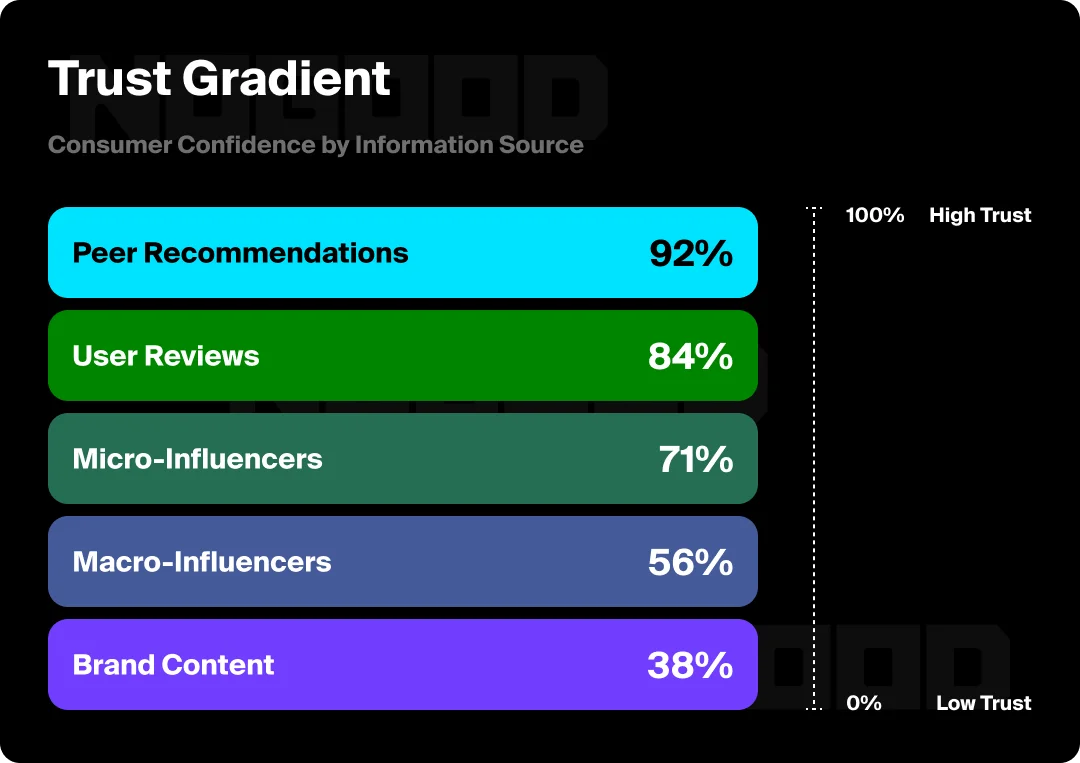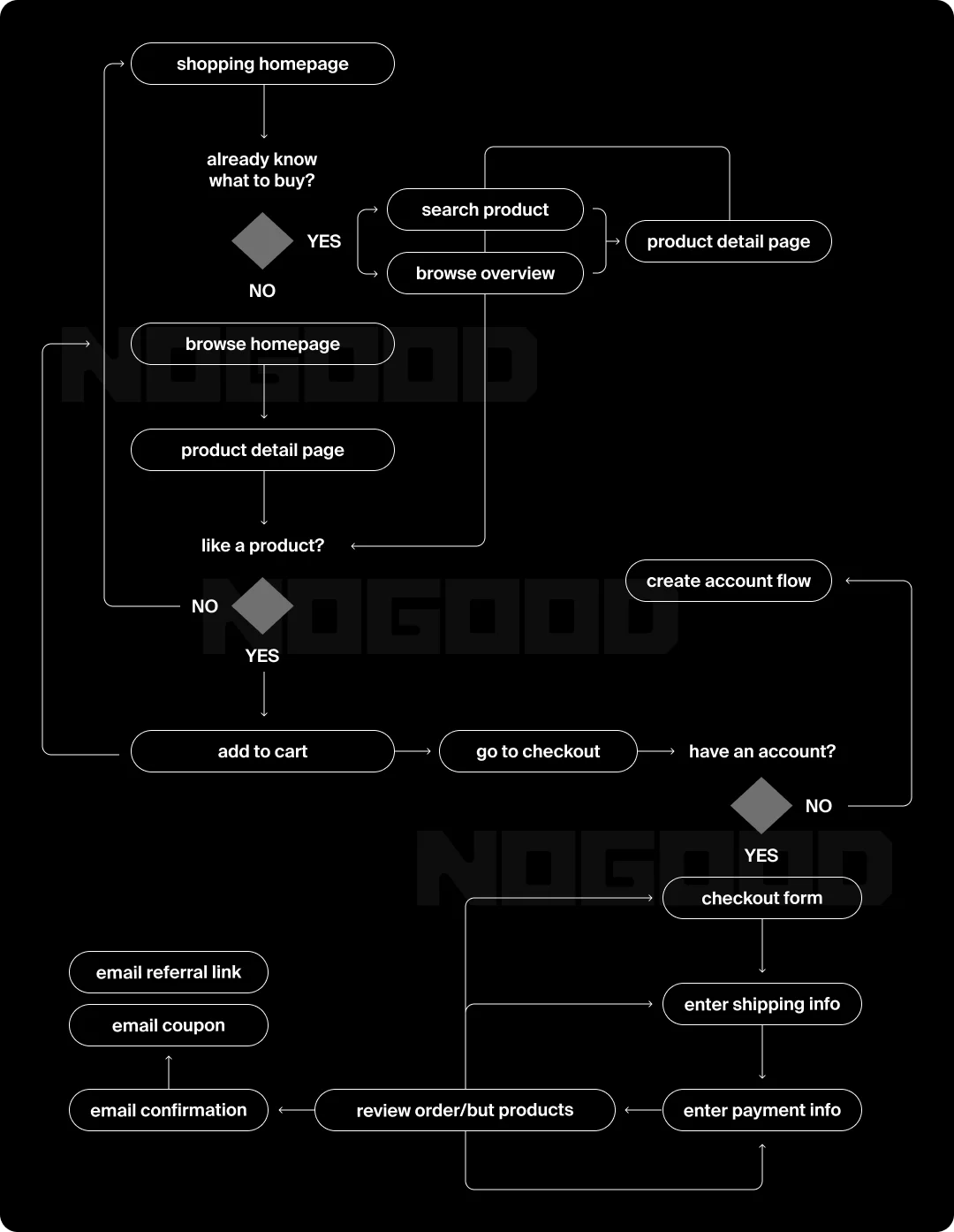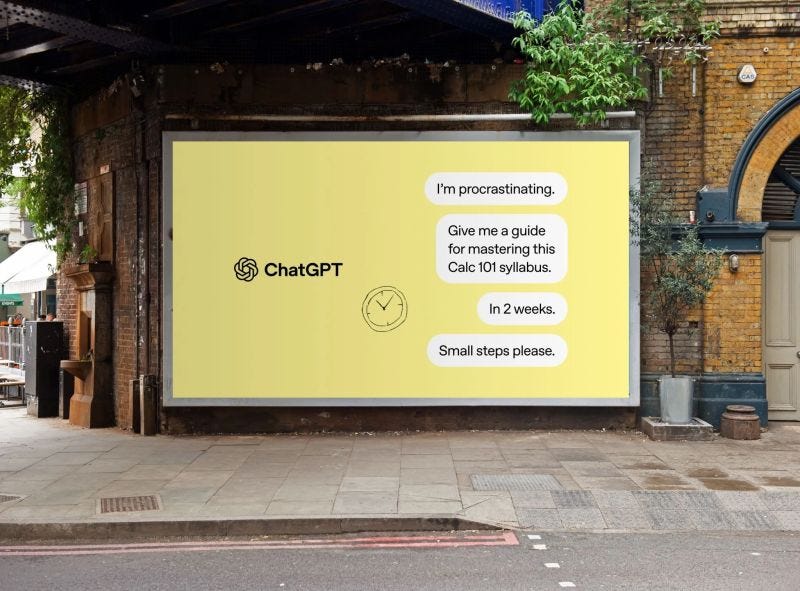Will AI literacy become a requirement in colleges?
📰 NoGood News | Vol. 91
Hi NoGoodies,
Before we jump into another round of the NoGood News, here's a quick TL;DR of what's below:
Are brands losing consumer trust?
Learn about shift in search behavior and how brands can win their audience back
Creating successful UX experiences aren’t as easy as you think
Understand the importance of mapping out user flows and journeys
AI literacy is no longer a plus — it’s a requirement
Read about OpenAI’s strategic move to get in front of college kids
Ready? Let's get into it.
👀 Are brands losing consumer trust?
Learn about shift in search behavior and how brands can win their audience back
Consumers today are not just skeptical — they actively seek validation from trusted communities and peers.
This shift is evident in changing search behaviors, with many adding “Reddit” to the end of their Google searches or turning to niche search engines, social platforms, and AI-powered answer engines for more authentic insights.
User-generated reviews, trusted creator partnerships, and peer-to-peer recommendations are now pivotal in guiding consumer decisions.
Brands that authentically plug into conversations and use UGC effectively find themselves well-positioned to build credibility.
Consequently, brands must focus on aligning with creators whose values and messaging resonate authentically with their target audiences.
Brands that adopt this approach gain sustained credibility and deeper consumer engagement, capitalizing on influencers’ ability to drive meaningful, authentic interactions.
🎨 Creating successful UX experiences aren’t as easy as you think
Understand the importance of mapping out user flows and journeys
As a designer, it’s always essential to consider the end user and user experience (UX) when designing a new product or optimizing a product feature.
There are typically multiple actions a user might want to take, and it’s up to the designer to ensure that those questions or needs are taken into consideration to create a seamless experience.
That’s why user flows and user journey maps are key tools to use when creating successful UX experiences.
Strategic steps to map out user journeys
Define the end goal & objective: think about what the end user is trying to achieve and what their goal is.
Create user personas: a different user journey map should be created for each unique persona since they might not all have the same needs.
Define user phrases & visualize journey: break down the different steps or phases of the user journey to help visualize the various touchpoints and user interactions.
Map user actions & emotions: map out the user’s emotional states during each phase or action they’re moving through. By tying each phase back to emotions users are feeling, there are clear identifiers for opportunities to optimize the design experience.
🚨 AI literacy is no longer a plus — it’s a requirement
Read about OpenAI’s strategic move to get in front of college kids
This could either go so well — or so bad.
OpenAI just announced that ChatGPT Plus is free for college students through May.
This is clearly a strategic move to get in front of college students ahead of final exams.
It also coincides with OpenAI's first major marketing push, with billboards, digital ads, and podcasts supporting the promotion.
More importantly, it also reflects the ongoing shift in how artificial intelligence is being positioned within education.
AI literacy is no longer a plus but a requirement.
College-age students already make up a large proportion of ChatGPT's user base, with over 1/3 of U.S. adults aged 18 to 24 using the platform.
What will midterms and finals look like as AI tools become more and more part of daily life?
Will exams have to be "AI-proofed", or will assignments shift to focus more on soft skills like creativity and critical thinking?
🎙️ Q&A with an expert
A bi-weekly interview series with the best in the game
Q: When looking at the studio ghibli trend, do you think AI-generated images are a threat to traditional design, or is it just another tool to use?
A: I think AI images threatens specific artists much more than designers because artists are more at risk of having their style inauthentically copied such as the ChatGPT Ghibli trend. And sadly people will take advantage of that. But design at its core is more about problem solving than it is about art. No problem/solution is black and white and situations are too nuanced for AI to completely replace a good designer. Designer’s shouldn’t just generate an image and call it a day. It can be used as a tool as long as you can fix it, see what’s missing, fill in the gaps, and add some soul to the final product.
Q: How has AI changed the way you approach your creative process?
A: AI has changed my process in way that makes me more bold with ideas and quicker with executions. It actually also keeps me on my toes because it makes me realize that design fundamentals are more important now than ever. The better I am at design, the more confident I am at using AI—because I’ll trust my ability to fix/control it.
✍️ We wish we wrote this
A curated list of the past 2 weeks’ must-read articles:
Up on the chopping block for the latest rebrand — Canva
Not only can you watch Black Mirror but you can play it too
Will influencer marketing convince people to watch a Broadway show?
👀 Keeping up on the socials
Because we know you like to stay in the know:
Chipotle can sell anything — this time it’s black forks
The Kardashian cookies just dropped at Crumbl
College kids can relax for finals thanks to ChatGPT
Did the Studio Ghibli AI trend go too far?
🔥 Trend Radar: Blow up or fall behind
The trending topics, sounds, and formats to key and eye on:
🚀 Ready to meet your NoGood partner?
Tell us where you are and where you want to be — and we’ll help get you there.





